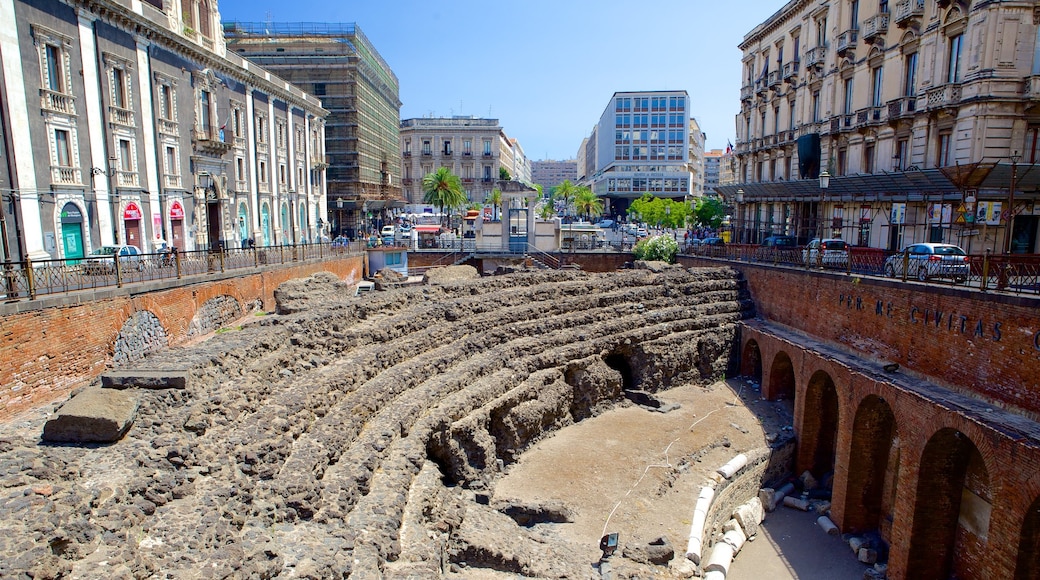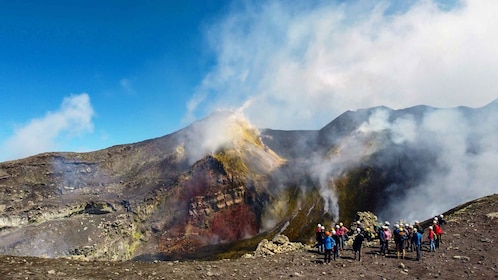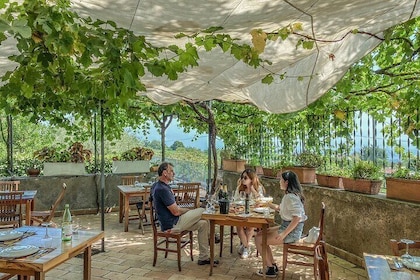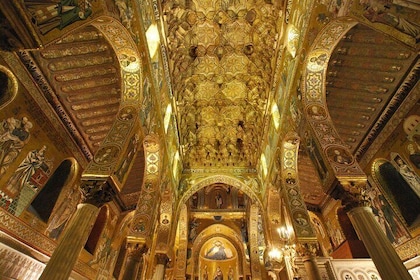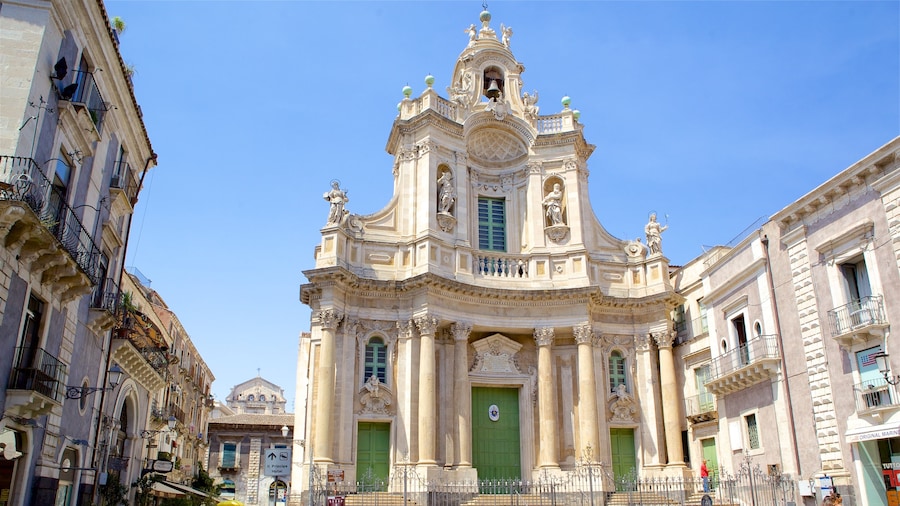This well-preserved ancient structure in Sicily transports you back to the days of the Roman Empire.
Stand on the stage of the Roman Amphitheater and imagine the arena filled with thousands of locals cheering gladiators, laughing at a play or enjoying a musical performance. Explore the hidden corridors and see ruins of viaducts, a marble orchestra pit and more.
Start your visit to the Roman Amphitheater with a walk through the ghostly underground tunnels. These have stood here since approximately 500 B.C. Two separate excavations in 1904 and 1906 have left many of the paths cleared, but be sure to wear a good pair of walking shoes in order to navigate the uneven floor and cobbled stairs. Bring a small flashlight for help finding your way through the dark passageways.
Back in the sun, stand in the performance area where gladiators once fought to entertain the public and imagine the noise that would have filled the stadium. Look around and you’ll see the remains of viaducts that brought in water from nearby rivers. This allowed performers to recreate battles at sea.
Walk up into the main stand to peer down onto the marble orchestra pit. Here, Roman musicians would have played, perhaps entertaining the crowds before the beginning of a gladiatorial battle.
Climb to the top of the stands to truly appreciate the colossal size of the amphitheater. Only part of the total audience area remains but the amphitheater could once hold more than 16,000 spectators. In terms of size it is second only to the great coliseum of Rome as an ancient stadium.
The Roman Amphitheater is located on the west side of the Piazza Stesicoro in central Cantania. It is surrounded by stunning 17th-century apartments, some now housing delightful cafés and small restaurants. Admission to the amphitheater is free and it is open all day. Contact the local tourism board to arrange private tours.


